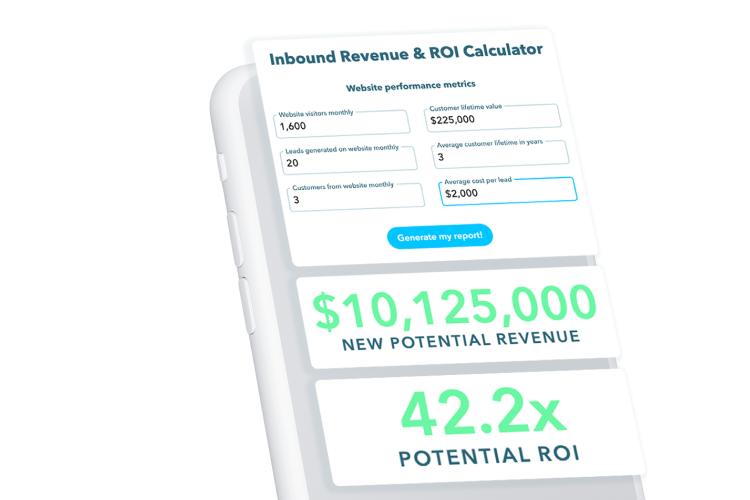 1,699 views
1,699 views March 8, 2024
March 8, 2024 5397 Views
5397 Views  5 min read
5 min readSocial selling uses social media platforms to build and nurture relationships with potential customers. Providing value by offering thoughtful content and answering questions for prospects connects you with peers and potential buyers by attracting, engaging, and influencing key decision-makers.
Social selling the Inbound way is an approach where you engage in ‘social’ discussions and share meaningful and helpful content. Embracing social selling impacts your sales, marketing, and communication. Let’s look at the inbound approach versus outbound.
People flock to social media channels for answers to their challenges and solutions that fit their needs and to engage with like-minded thought leaders and peers. Your prospects come to you. This is the inbound way. Inbound social selling is where you meet your potential customers, engage with them, and answer their questions—frictionlessly.
Social selling is leveraging your social network to find the right prospects and build trusted relationships. The traditional outbound process usually involves the classic approach of cold-calling potential customers to build new relationships and close deals. The inbound way warms them up first before you take it offline. Both approaches are practical and effective and have specific goals and benefits. The most significant difference is in who initiated the conversation first.
Social selling is all about using a brand’s social media channel and your personal channel to connect with prospects and develop relationships. Sharing content (and not just your own but relevant 3rd party content) on social media to attract prospective customers is a step in presenting your company and brand as a trusted source. And trust comes before the sale. The approach embraces two-way communication, making it less transactional and more meaningful to your prospect. Here are a few social-selling best practices:
Building a solid personal brand by optimizing social media profiles establishes trust and credibility. Share relevant content with your network and connections. For example, you can create content on LinkedIn by updating posts or creating articles via LinkedIn’s publishing platform. LinkedIn posts can be done once a week to start. Getting a social post cadence down is the most important. Writing a paragraph or two with an image or native video will help you get recognized.
Like and reply to every comment. This applies to your posts and others. It’s a social platform. Connect with those people who are relevant in your industry. They will become advocates and share your work to expand your network.
With LinkedIn, you can create an article or a newsletter. Andy Crestodina, Co-Founder and CMO at Orbit Media, shows you how to start your own LinkedIn Newsletter with the 10 best practices he used to get over 200k subscribers. This quick video guides you in creating your first LinkedIn newsletter . . .
Source: Orbit Media Studios, LinkedIn Newsletter Best Practices and Setup Guide, YouTube
The content calendar helps you plan, organize, and schedule your content. Think long-term if you want to serve your audience and create posts that get engagement. Social platforms are unique. Sticking with LinkedIn, start with a post at least once a week and build from there. Consistency and quality are more important than quantity. Not all content should be promotional, either. Brands should contribute non-product-related posts that include industry insights, blogs, and relevant and worth-sharing articles.
‘The Social Selling Index provides sales professionals with insights into their Social Selling activity, enabling them to set targets and track their development as social sellers.’
You can find information related to your performance on LinkedIn compared to your peers for your network and sector. The closer your LI score is to 100, the better you’re performing—compared to your peers. LinkedIn recommends aiming for an SSI score of 75 or higher. You will be considered an industry thought leader on the platform at that level. You can find your SSI score by clicking here if logged in. Otherwise, go to Sales Navigator, ‘Admin,’ and click ‘User Report.’
Social selling is a way to boost brand awareness and visibility. It helps establish you and your company as thought leaders. An example of Inbound social selling is when a person on your social media channel engages with your content or asks a question on one of your posts. The point is that your potential prospects come to you. Over time, that builds trust, and eventually, they feel comfortable and confident to buy from you.
Chris Walker is the epitome of building his brand and personal profile, with close to 150,000 followers who engage with his content daily. He uses video content on LinkedIn that is built for native consumption. Based on comments, shares, and engagement, he gathers insights and validation from peers about purchasing decisions and business goals.
Another fun example of social selling that quickly generated close to 1,000 likes, 200 comments, and 60 reposts within a few hours of posting is a one-page checklist on the 9 principles of better stories. Jeremy Connell-Waite even threw in a ‘dark-mode’ carousel.
Instead of focusing on how to sell more, he focused on how to offer more!
Social selling the inbound way is about building relationships. Be active and show your presence on social media by sharing and commenting on relevant content and adding elements specific to your expertise. You show the value of your product or services without forcing it, and your prospects come to you. The key is creating quality content.
Responsify helps B2B companies provide value through content that builds relationships and positions you as a trusted authority within your industry. This approach leads to long-term customer relationships and increased sales opportunities. We help companies grow their businesses by engaging and educating your ideal audience. Get a fresh perspective on your marketing with a free assessment. In the interim, go ahead and discover your company’s growth potential with our Marketing Insights Evaluator™ and get some strategic recommendations instantly.
